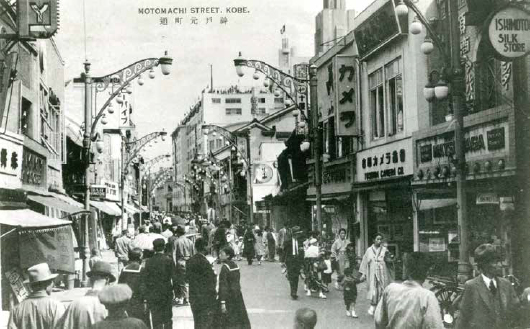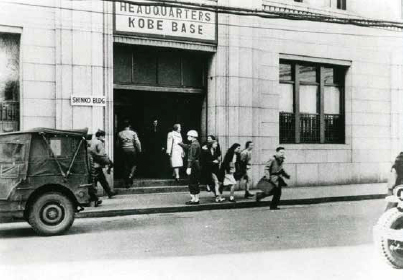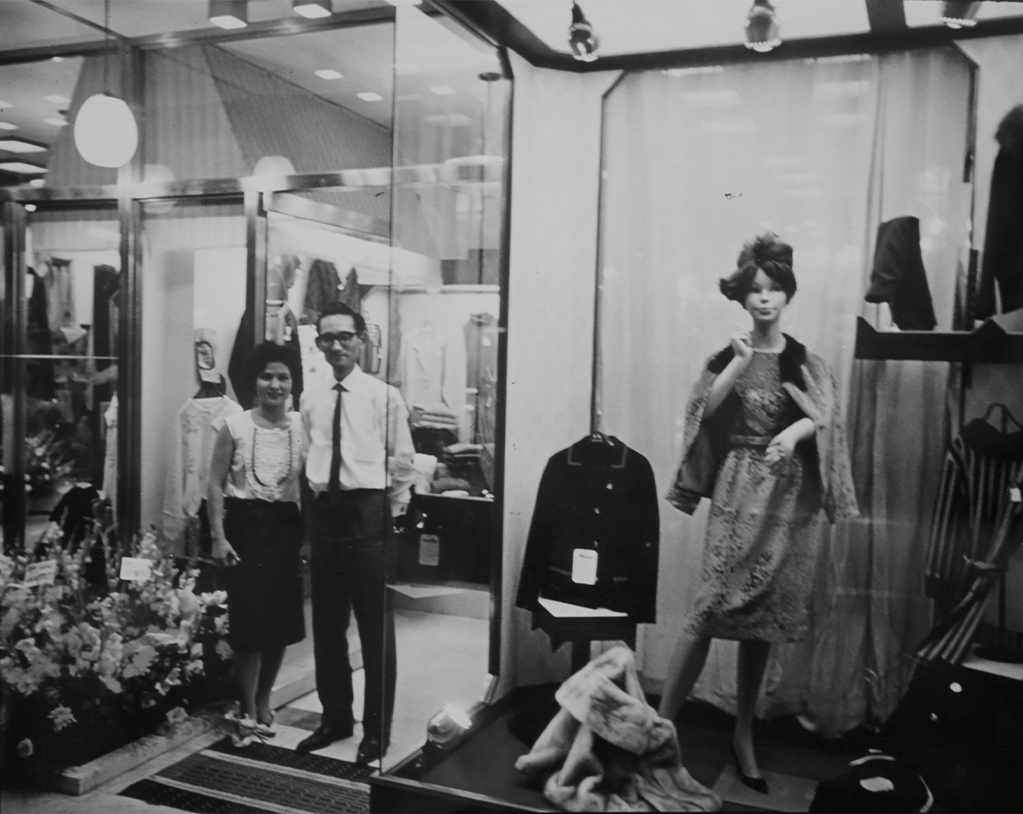JP|EN
History / From the Founding of the Company to the Present
Serizawa Shoten was founded during the wave of civilization and enlightenment.
Serizawa Shoten was founded in 1903. This was the year that the first beer garden was opened in Tokyo, Japan, and trains began running around in Tokyo, including the Yamanote Line. Amid the wave of the blossoming of modern Japanese civilization and culture, Serizawa Shoten split its business from Serizawa Shoten in Motomachi, Yokohama, and began trading in paintings and indoor crafts for foreigners in Motomachi, Kobe, near the foreign settlement area.
Since the opening of the port in 1868 (Keio 3), Kobe has flourished as an international trading port town, and Western culture quickly flowed in and spread. Many foreigners lived in the city, and a cosmopolitan culture blossomed, leading to the formation of industries such as clothing, shoes, pearl processing, Western furniture, and Western confectionery.
In the Showa period (1926-1989), the Daimaru Department Store moved to its current location, and its area became even more crowded. The founder of Serizawa Shoten, who was fond of new things, started a photo studio and went to Shanghai and other cities to look for new business opportunities. The Motomachi area of Kobe was filled with the vitality that gave birth to new industries and cultures. However, Serizawa Shoten was struck by the death of its founder.
The founder's wife took over as the store owner, but as the Second World War raged, Serizawa Shoten was forced to evacuate, as were most other stores.
One female officer's cardigan inspired the store,
eventually becoming a total fashion specialty store.
When the war ended, Serizawa Shoten opened a new store, which prospered as a store selling foreign goods, which was rare in those days, supported by foreign customers who had been coming to the store since before the war. Across the street from the store, the Daimaru Department Store became a PX for the U.S. Army. It was crowded with many Occupation Forces soldiers who also came to Serizawa Shoten.
A female U.S. Army officer held a stylishly draped cardigan over her shoulder and a thick book. She was carrying a Sears Roebuck catalog. The owner of the store was amazed at the clothing lined up there. She then ordered a cardigan identical to the one the female officer wore and studied. Many stylishly designed clothes were not found in Japan.
The sewing, the way the buttons were attached, and the lining of the buttonholes were all fresh and smelled of a new culture. Taking a cue from the cardigans, I asked a knitwear maker to make a cardigan. Clothing was still in the era of a regulated economy, and the cardigans were sold out before they could be displayed in stores. It must have been a hit with women looking for a way to enrich their lives after the war. We continued to add items to our lineup, but they sold out in the blink of an eye.
Undoubtedly, one cardigan has helped hundreds and thousands of women to be happy. Many customers gladly buy our British wool fabrics and Australian yarns. Fashion is truly something that enriches people's hearts. Serizawa Shoten was convinced that women's fashionable spirit, which had been suppressed due to the war, would grow with peace in the world. This was the start of Boutique Serizawa.
With the lifting of economic controls on textiles, the company secured a supply route for clothing fabrics and relocated the store. In addition to imports, the new store started original ready-to-wear products inspired by magazines such as Vogue and Seventeen, which were rare at the time, and also offered a lineup of sundries, which were well received. At the time, the Motomachi area was a center of American culture, full of cutting-edge fashions, and the wealthy women who strolled around the Motomachi area competed with each other in the latest fashions. Supported by the subsequent economic boom, Boutique Serizawa grew as a gift and fashion boutique.
In the 1950s, as the Occupation Forces left and the PX disappeared, the Daimaru Department Store returned to its original state, and the city began to look normal. The city was filled with the energy of a new Japan with the call, "It is no longer postwar.”
At that time, high-end Western-style clothing stores were either custom-order stores or Western-style sundries stores, and high-end ready-to-wear clothing was rare. Boutique Serizawa was established as a total fashion specialty store with a new men's lineup, creating an original style that could not be found anywhere else.
Later, with the rapid economic growth of Japan, the number of Serizawa stores expanded beyond Kobe to Tokyo and Osaka, expanding the number of Serizawa fans.
Nurtured by Kobe's fashion sense
for high quality and elegance
While foreign culture spread to Kobe before World War II, the Hanshin area, including Kobe, developed as a bed town community for wealthy merchants from Osaka or as vacation and summer resort areas, forming a westernized and modernized Yamanote culture. Clothing, shoes, and other artisanal cultures were also nurtured to support these cultures. A unique sense of elegance refined by Western civilization was born, with the importance of quality and refinement passed down from generation to generation of parents and children. The sight of a mother and daughter enjoying shopping together is the best representation of Kobe's fashion culture. This mindset has been passed down through the generations to Kobe today.
Kobe fashion, which does not follow trends but values quality and elegance and subtly incorporates movements, is a feminine fashion that everyone longs for and keeps in the back of their minds. In Kobe, Boutique Serizawa has presented fashion and culture for three generations since the Meiji era (1868-1912).